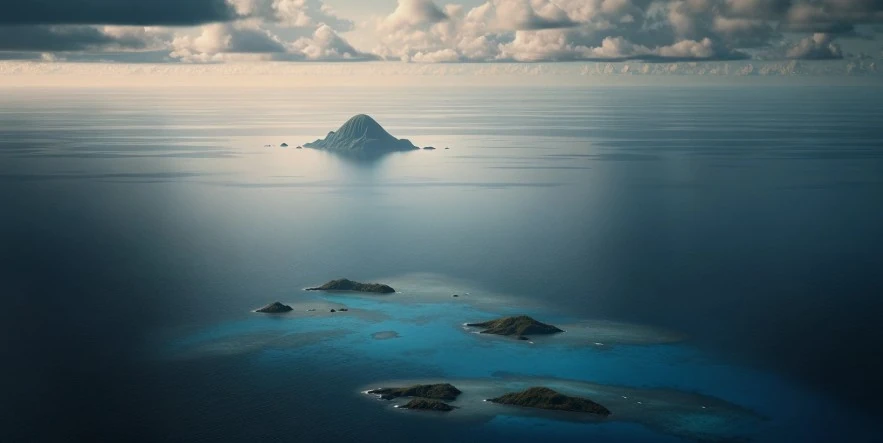Introduction of Oceanic Mid-plate Superstructures (OMS) in volcanic studies

New research introduces the concept of Oceanic Mid-plate Superstructures (OMS) to describe large volcanic structures formed from various volcanic sources over time. The study focuses on the Melanesian Border Plateau (MBP), an example of an OMS, revealing its formation through four distinct volcanic episodes, combining hotspot activity and lithospheric movements, contributing to around 222 000 km² of intraplate volcanism.
The ocean basins are dotted with an array of volcanic formations, including ridges, seamounts, and large igneous provinces (LIPs). While considerable research has been done on the origins of seamount chains and LIPs, the genesis of larger volcanic structures formed by a combination of volcanic drivers has received less attention.
To address this, researchers have introduced the term “Oceanic Mid-plate Superstructures” (OMS) to describe independent bathymetric swells or volcanic structures formed by overlapping pulses of volcanism over extended periods and from multiple sources.
The Melanesian Border Plateau (MBP) serves as a prime example of an OMS. Located in a region of shallow Pacific lithosphere, the MBP is composed of a high volume of volcanic guyots, ridges, and seamounts along the northern edge of the Vitiaz Lineament. Recent studies have aimed to compile a comprehensive volcanic history of the MBP, revealing its intricate and enigmatic origin.
The formation of the MBP involved four distinct episodes of volcanic activity. The first episode links to the Louisville hotspot, which likely generated Robbie Ridge and some Cretaceous seamounts near the MBP. During the Eocene, as the lithosphere passed over the Rurutu-Arago hotspot, a series of oceanic islands and seamounts were formed, marking the second episode. The third episode occurred in the Miocene, involving the reactivation of previous oceanic islands and seamounts and the construction of new volcanos as the lithosphere passed over the Samoa hotspot.
The fourth and final episode of the MBP’s formation extends from the Miocene to the present day. It involves volcanism driven by lithospheric deformation and the westward entrainment of enriched plume mantle due to toroidal mantle flow. This flow is attributed to the rollback of the Pacific plate beneath the Tonga trench. These combined processes have resulted in approximately 222 000 km² of intraplate volcanism within the MBP.
These observations cement the MBP region as a valuable type example of multiple tectonomagmatic phenomenon generating oceanic mid-plate superstructures.
References:
1 Four distinct pulses of volcanism built the Melanesian Border Plateau: Implications for oceanic mid-plate superstructure formation – Konrad et al. – Earth and Planetary Science Letters Volume 626, 15 January 2024 – https://doi.org/10.1016/j.epsl.2023.118549
Featured image credit: TW

Commenting rules and guidelines
We value the thoughts and opinions of our readers and welcome healthy discussions on our website. In order to maintain a respectful and positive community, we ask that all commenters follow these rules.